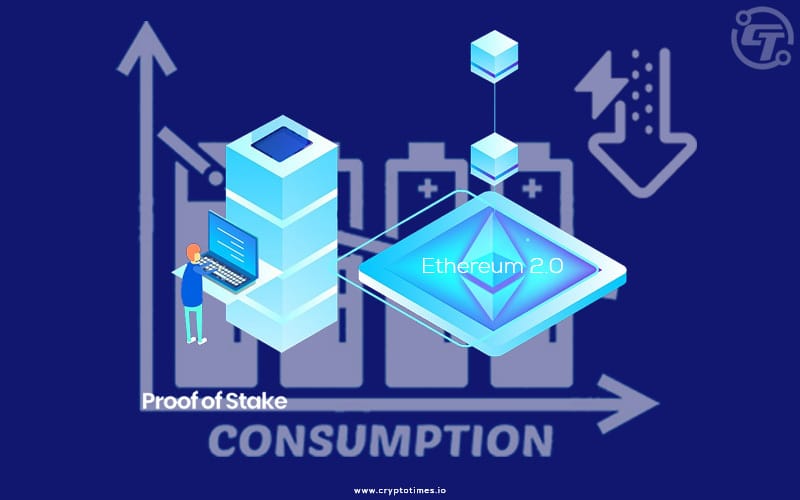Proof of stake reduces the energy consumption of blockchain by 99% in ETH 2.0. This gives Ethereum blockchain a better way to fight its carbon footprint problems.
Currently, Ethereum and Bitcoin operate on the Proof-of-work system, which requires a global network of computers worldwide to validate a transaction. As we know, several developers at Ethereum worked for years to obtain various approaches to secure networks and eliminate carbon emission issues. The best one they came up with for Eth2.0 with a proof of stake mechanism.
Proof of work utilizes the capital cost of buying and maintaining computer hardware and electricity to run economically. Miners secure the transaction, done by people. The first miner verifies the latest batch of transactions on the blockchain to earn rewards in the form of native cryptocurrency.
PoS in Ethereum
In Proof of stake instead of miners, validators work to secure the network and validate the transactions, and the key is keeping them honest. PoS does this by requiring each validator to put up a stake—a pile of ether in Ethereum’s case—as collateral. A bigger stake earns a validator proportionately more chances at a turn, but it also means that a validator caught cheating has lots to lose.
The proof of stake mechanism is more energy efficient as most of the computations are offline, which drastically reduces the energy consumption to mine a block. Moreover, a Proof of Stake network has no lower bound on the amount of energy it needs to expand. Indeed, as computer technology improves, we can expect the power required to drop.
In the Beacon Chain of Ethereum, more than 4.6 Million ether have been stacked worth about $11.5 billion at an Ether price of $2,503. That means once proof of stake is in place, only the cost of electricity will come from the servers that host Ethereum nodes
The change delayed by complicated technical setbacks couldn’t come soon enough for the cryptocurrency world. The greatest bouts of volatility ever this month after Elon musk announced not accepting bitcoin as payment due to energy use. The compilers of the record don’t gauge Ethereum energy use.
How does PoS help Ethereum?
These changes could support the price of Ether, which is important to utilize Ethereum as environmentally conscious investors. Criticism on proof of work comes from Millennials and investors who value positive environmental, social, and governance or ESG standards.
Danny Ryan, a researcher at the foundation, said Ethereum proof of work uses 45,000-gigawatt-hours per year. With proof of stake, “You can verify a blockchain with consumer laptop,” he said, “I estimate that you’d see 1/10,000th of energy than current Ethereum network.
Also Read: Optimism Collaborates With Etherscan To Create Optimistic Ethereum
“Switching to proof of stake has become more urgent for us because of how crypto and Ethereum have grown over the last year”, Vatalik Buterin said in an Interview. He except changes is made by the 2021 year-end or while others say it will first half of 2022.
He also said, “He is very happy that one of the largest problems of blockchain will go forth when proof of stake is complete. It’s amazing.”







